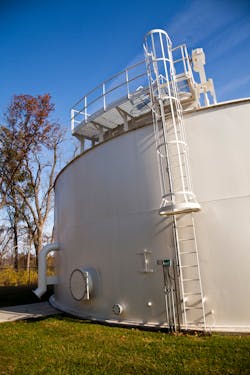Navigating AWIAs Risk and Resilience Requirement
Following a year when “unprecedented” has become a buzzword, when everything from handshakes to public school structures have changed in unforeseen ways, few things have remained constant. One thing that has not changed is the deadline set by the Environmental Protection Agency (EPA) for the mandatory Risk and Resilience Assessments (RRAs).
As part of the America’s Water Infrastructure Act (AWIA) of 2018, every water utility serving a population larger than 3,300 people is required to complete an assessment of the vulnerability and resilience of their facilities according to a schedule determined by utility size. RRAs for the largest utilities (serving more than 100,000) were due in March 2020, mid-sized utilities (serving 50,000–99,999 customers) were required to complete theirs by the end of 2020, and smaller utilities (serving populations of 3,301–49,999) have a deadline in June of 2021. The EPA has identified a five-step approach to risk management for community water systems, and the RRAs are intended to reflect that approach:
- Set goals and objectives for an effective risk management posture.
- Identify infrastructure that contribute to the critical functionality of the system.
- Assess and analyze risk, considering direct and indirect consequences, known vulnerabilities, and threat information.
- Implement risk management activities to control, accept, transfer, or avoid risks.
- Measure effectiveness of security efforts and resilience of critical infrastructure.
The assessment must include both natural hazards and malevolent acts, and it must consider all the following assets:
- Physical barriers
- Source water
- Water collection and intake
- Pretreatment and treatment
- Storage and distribution
- Electronic, computer, and automated systems
- Monitoring practices
- Financial infrastructure
- Use, storage, and handling of chemicals
- Operation and maintenance
These assessments can seem daunting, especially for utilities already pressed for time and resources. But with the right team assembled and the right process in place, the RRA becomes a manageable task that leads to beneficial insight for a utility and the community it serves. Recently completed RRAs have resulted in lessons learned from which tips and insights have been developed to make the process easier and the outcome more valuable
Remember the Goal
Typically, the purpose of an RRA is twofold: to provide meaningful insight about a utility’s vulnerability and resilience, and to meet the requirements of AWIA. Keeping these goals in mind can help shape the scope of the assessment. AWIA requires an assessment of all assets that are critical to the mission of the water utility. If the loss of a particular asset would not keep a utility from meeting its primary goals, it does not need to be included in the RRA. It is important to establish early in the assessment process what the utility views as its mission and which assets are critical to that mission to determine the scope of the assessment. However, a utility may be aware that certain assets are either particularly sensitive to threats or are of particular value to the utility without being critical to its mission. The utility may then choose to include those assets for a more robust and useful RRA.
While VSAT provides a powerful tool to help process the information, the assessment is more than just data gathering and entry. One key component is understanding the consequences of failure for any critical asset in the utility. How much of the community would be without water? How long would the outage last? These are questions that no tool can answer, and no previous study is likely to disclose. But having all the information assembled in one place can help the assessing team estimate those consequences in an efficient and meaningful manner.
Document Decisions
One drawback of a tool that generates reports is that some transparency in decision-making gets lost. How were the economic consequences of an asset determined? Why has one asset been determined to be more vulnerable to a tornado than another? Documenting these decisions as they are made and entered into VSAT can make the information presented in the report more useful in the present and make future updates more consistent. The decision-making process can be included as an addendum to the VSAT report.
The payoff from all this effort is more than just complying with a federal mandate. A well-written and organized RRA provides a utility with meaningful insight into what assets are already resilient to threats and where resources should be focused for future improvements. It can illuminate what “low-hanging fruit” will provide the greatest additional protections for the utility. It can serve as a tool to explain decision-making to stakeholders and the community at large. And it paves the way for an Emergency Response Plan that addresses threats in an informed and reasonable way. Ultimately, a high-quality Risk and Resilience Assessment helps a community protect one if its most valuable resources — the water it provides to its residents. WW
About the Author: Micah Pitner is a senior engineer at Crawford, Murphy & Tilly, Inc. She has served as project engineer and project manager on risk and resilience assessments and emergency response plans for communities in Illinois and Missouri.
About the Author
Micah Pitner
Micah Pitner is a Senior Engineer at Crawford, Murphy & Tilly, Inc. She has served as project engineer and project manager on risk and resilience assessments and emergency response plans for communities in Illinois and Missouri.

